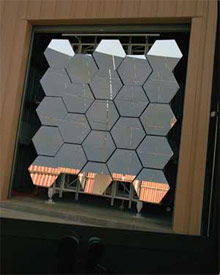The University of Colorado in Boulder, Colorado State University in Fort Collins and the National Renewable Energy Laboratory in Golden, Colo., have embarked on a project to develop rapid solar-thermal reactor systems for the conversion of biomass to syngas. The project is being funded by a three-year, $1 million USDA and U.S. DOE grant as part of an $18.4 million package to fund 21 biomass research and development demonstration projects.
The collaboration is led by Alan Weimer, a professor at CU-Boulder and executive director of the Colorado Center for Biorefining and Biofuels who worked for Dow Chemical Co. for more than 16 years before pursuing a career in academia. At Dow, Weimer worked in the area of ultra high-temperature processing for the synthesis of fine materials like tungsten carbide, which is used in the manufacture of mining instruments and other high-tech tools. The materials were generated by flowing chemical precursors through a graphite reactor tube that is heated indirectly by electricity.
When he joined the university’s Department of Chemical and Biological Engineering, his first project was an extension of his earlier research, but rather than using electricity from the grid, his work involved using concentrated sunlight for chemical processing. “The process looks a lot like the technology developed at Dow except instead of heating with electricity, we use sunlight,” Weimer explains. “We can achieve the same temperatures without generating any greenhouse gases.”
During these early studies, Weimer and colleagues established a relationship with the engineers at NREL who had designed what’s called a high-flux solar furnace in the late 1980s.
The furnace facility sits on top of a high, barren mesa and consists of two main components: a flat mirror called a heliostat that tracks the sun as it moves across the sky and a primary concentrator, which consists of a series of 25 curved, hexagonal-shaped mirrors. The large, 32-square meter (38-square yard) heliostat reflects sunlight onto the primary concentrator, which focuses the sun to a single point. “It’s basically similar to using a magnifying glass to concentrate sunlight to a point, although we use mirrors instead of lenses,” explains Carl Bingham, staff engineer at NREL. This concentrated sunlight, which has been reduced to a beam measuring 10 centimeters (4 inches) in diameter, is reflected a second time at a target area inside the test building where researchers run their experiments. ”
The researchers then collected some Kentucky bluegrass from outside the laboratory, grind it up and process it. “What we discovered was that at temperatures of about 1,200 degrees C (2,192 degrees F) the short, rapid pyrolysis or gasification in the presence of steam of the biomass, produced syngas with usage in excess of 90 percent of the biomass,” he says. This is significant, Weimer explains, because conventional gasification processes require a partial oxidation of the feedstock, which leads to yield loss. In addition, the very rapid heating for a very short time prevented the formation of tars. This eliminates the need for cleaning the syngas before it’s reformulated to fuel, which is a pricey capital cost for a biomass plant, Weimer says.

